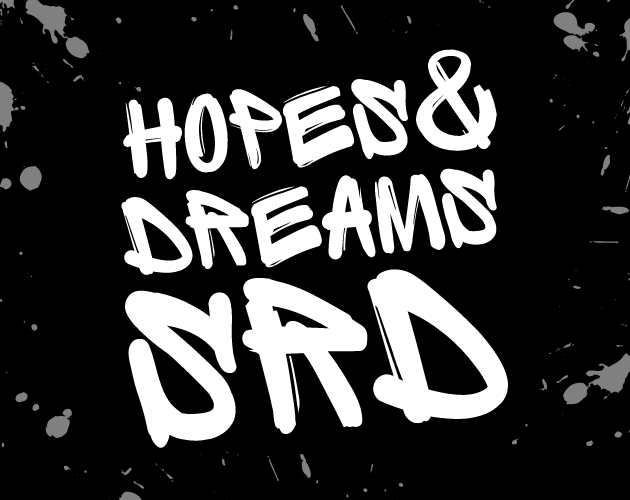Checks
Player’s Pool
- Start with 1d6.
- If your character is skilled, or is knowledgeable in a field that relates to the action they are trying to accomplish, add a d6 to your pool.
- Spend 1 hope for an extra d6 to give it all you’ve got.
GM’s Pool
Start a discussion with the players to determine the risk, and hindrances related to what they are doing.
- Start with a 1d6 for a daring action.
- Increase to 2d6 for a desperate action
- Use 3d6 for a hopeless action.
Roll
Everyone rolls their own dice pool, and compares their highest single die to the opposing highest single die.
- If the player beats the GM: It’s a success. Gain 1 hope if you didn’t spend any.
- If the player ties with the GM: It’s a success, but there’s a consequence to your action.
- If the GM beats the player: It’s a failure, and there’s a consequence to your action.
We call the final size of the player’s and GM’s pools the impact and the cost, respectively. Those can be modified by other factors, but they start as the initial number of dice rolled by each party.
Help Out
When you help out, say how you want to help, and add a 1d6 to the pool of the player who’s making the roll. When assisting another character, you share the same risks as them. This means both characters could end up with hindrances, or narrative consequences.
Hopes
Hope is a currency that you can use to shift the odds back in your favor.
When making a check, spend 1 hope to fill your heart with determination, and add a d6 in your pool. To gain more hope, you need to beat a check against the GM. You also don’t generate hope for checks where hope was used.
Hindrances
If you fail or tie on a check, the GM can decide that you get a hindrance. A hindrance is a negative fleeting aspect attached to your character. When making a check, the GM may increase the risk of the roll if a character’s hindrance affects the circumstances in any way. To remove a hindrance, explain how you take care of it, and wait the appropriate amount of time.
Challenges
GM, when you need to track the effort against an obstacle, introduce a challenge track.
Explain what it is about, gives it a name, and draw a row with 3, 5, 8 or 13 boxes on an index card. The bigger the challenge, the bigger the track.
When PCs tie or succeed a check related to a challenge, they can mark boxes on the challenge matching the number of dice the player rolled. We call this the impact of the roll.
When all the boxes are filled, the challenge is resolved. Work all together to decide what that means in the story.
Countdowns
GM, when you want to force the PCs to act quickly before things get worse, introduce a countdown track with 3, 5, 8 or 13 boxes.
When PCs tie or fail a check related to a countdown, mark boxes on the countdown matching the number of dice the GM rolled. We call this the cost of the roll.
When all the boxes of the countdown are filled, something horrible happens, and the situation gets worse for everyone.
Dreams
The group’s dream is their short-term goal. Define the dream as a group, and pick a player who writes it down on their character sheet. They are now the heart of the group. When a player succeeds or ties a check related to the group’s dream, the GM can offer that player to mark boxes on the dream track matching the impact of the roll.
Nightmares
The group’s nightmare is something the player characters dread which is in direct opposition to their dream. Once the group’s dream has been defined, find the nightmare as a group, and write it down. When a player ties or fails a check related to group’s nightmare, the GM can mark boxes on the nightmare track matching the cost of the roll.
Story Shift
When the group’s dream or nightmare track is filled, there is a huge shift in the story. The GM waits for the current scene to be over, fast forwards in time, and narrates how the world changes for the better or for worse, depending on which track was filled. The filled track gets cleared, but the other track stays untouched. The group then works together to define a new dream, AND a new nightmare, based to the current state of the story. If the dream track is the track that got filled, all the PCs get a new ability from their respective kits, pick a new skill or area of knowledge, and elect a new heart of the group.
Oracle
When you want answer to a question, and don’t want to decide for yourself, ask the oracle in the form of a yes or no question. Roll 2d6, sum the two number.
- On a 2-3: No, and…
- On a 4-6: No
- On a 7: Yes but...
- On a 8-10: Yes
- On a 11-12: Yes, and…


